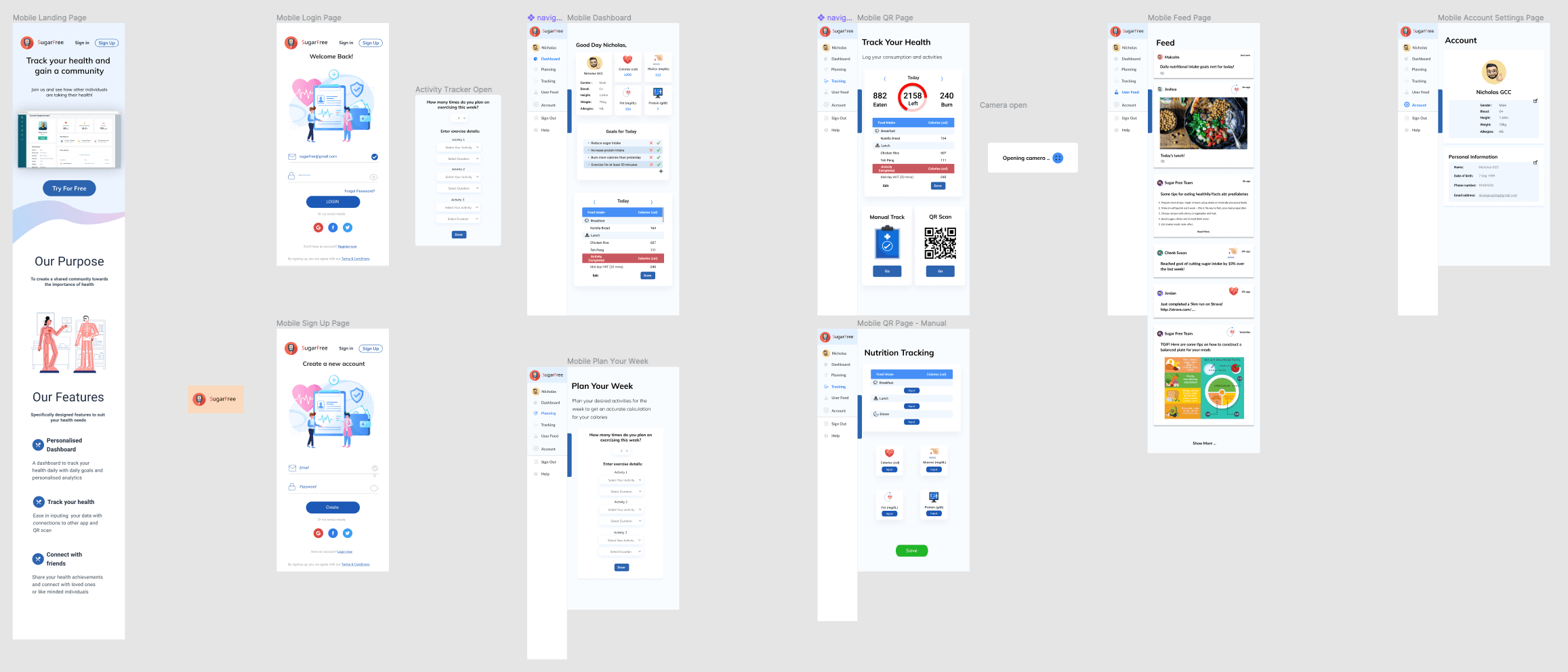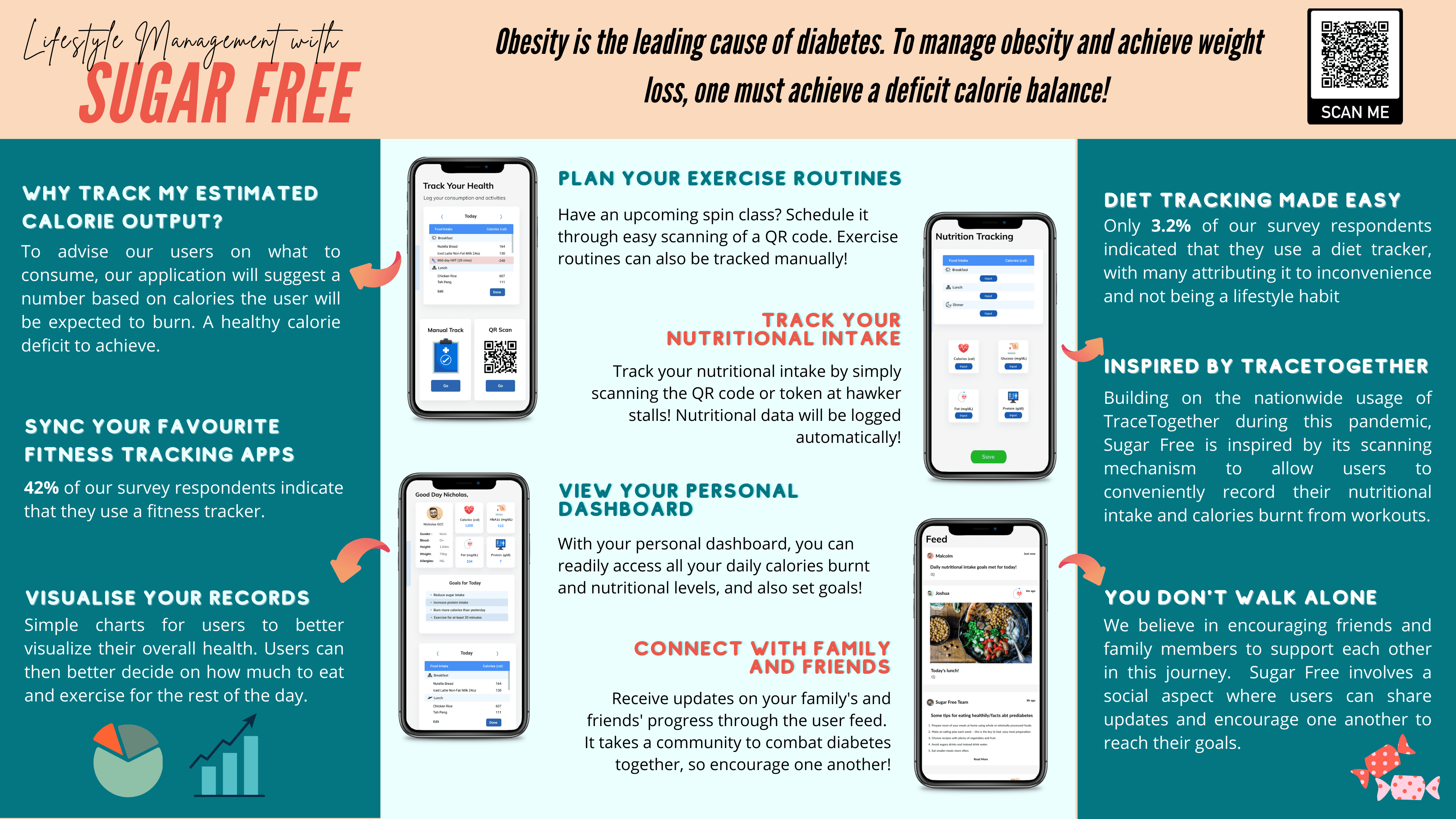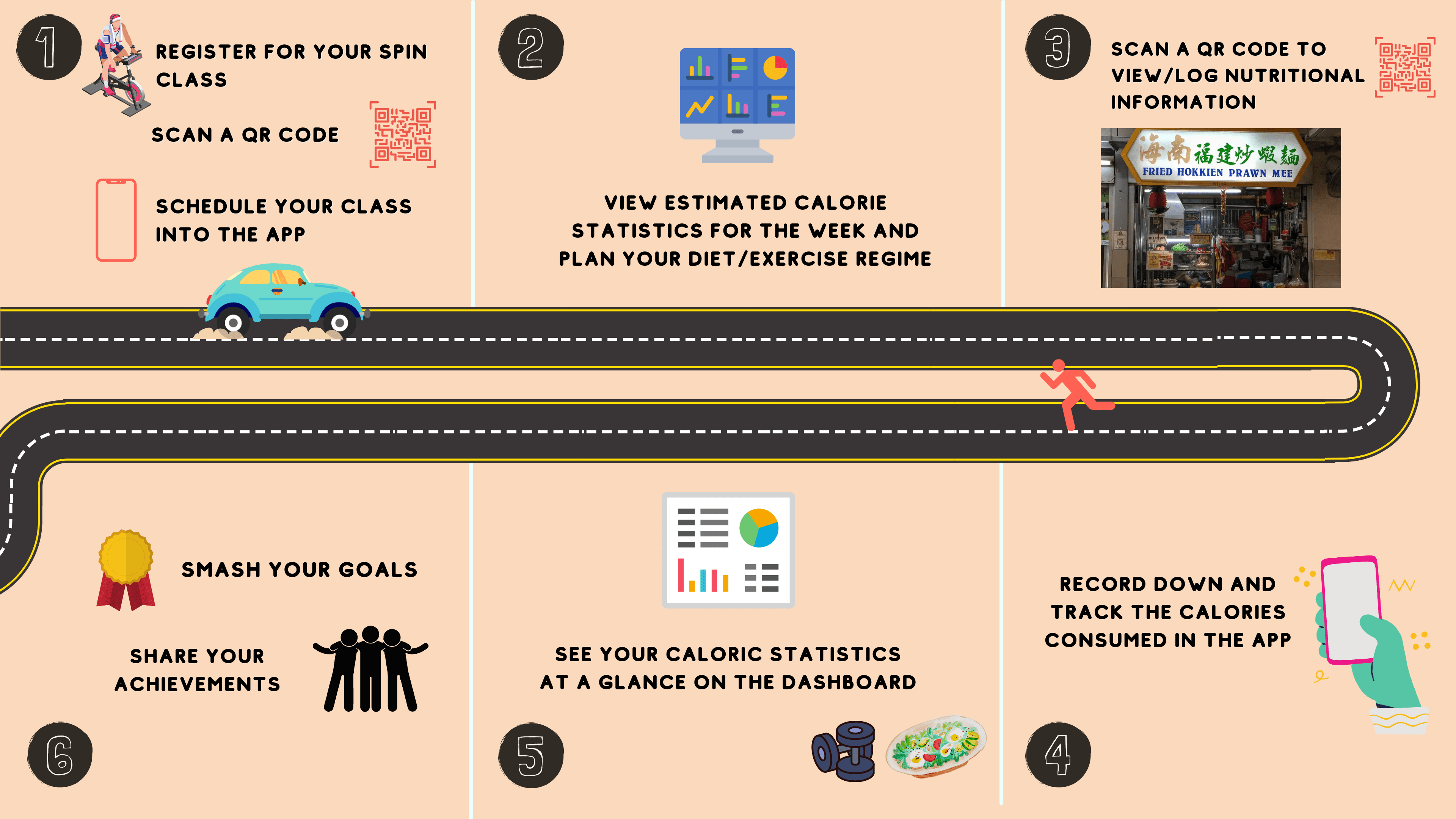Beyond! Health Hack 2021
My first health hackathon!
Written on: 28 Jul 2021
My first health hackathon!Written on: 28 Jul 2021
B!HH was a 2 week hackathon from 17 to 28 July 2021. During the 2 weeks, my team came up with a solution that would allow Singaporeans to manage their diet and fitness goals effectively in order to stay healthy. While we did not make it to the finals, it was a memorable and valuable learning experience.
About the project
Problem Statement
"Lifestyle management to combat pre-diabetes for those aged 40 and above" – this was the problem statement given to us. Having little experience or prior medical knowledge, our team set out on researching on the problem of pre-diabtes, its causes, social and economic impacts on society. Obesity, according to our research, has been widely identified as the number one contributing factor to diabetes. Thus, in order to manage pre-diabetes and diabetes, it would be very important for people to manage their diets – something that is, however, not ubiquitous amongst Singaporeans.
Inspiration
Our solution was mainly inspired by TraceTogether. TraceTogether has paved the way for meaningful QR code or NFC solutions integrations in our lives. Thanks (but no thanks) to COVID-19, the act of using our phones to check in and out has become deeply ingrained in our lives. This sets the precedence for Sugar Free, our QR code/NFC mobile application solution, to help Singaporeans keep track of their diets easily using similar technologies.
Our solution
Borrowing ideas from pre-existing budget and health tracking apps, we wanted to create a diet tracker that combined a good dashboard display and our innovative QR code input system. The dashboard would display relevant information such as calories consumed for the day, what we have ate and the caloric limit for the week. Users could scan QR code printed out at their favourite hawker stall, a convenient method to create entries in our diet journal. The QR code would provide data about the nutritional value of the food that the user ordered.
The Process
Firstly, we consulted our friends from medical schools and conducted a survey amongst those who were 40 and above. The advice and help given from our friends helped us to identify the root problem of the inconvenience of diet tracking. Our survey which garnered over 60 respondents confirmed our hypothesis, with only 2% of respondents using diet tracking apps. The lack of uptake for these apps were mainly attributed to "inconvenience" and "not part of my lifestyle". As a result, we were inspired and able to innovate our solution as mentioned in the section above. In order to streamline our design and development process, we took inspiration from pre-existing tracking apps and sketched our designs from them. Afterwards, we translated our sketches unto Figma.

Our Figma board
Challenges faced
New to hackathons
My team of 6, consisting of only students from the faculty of computing, was new to hackathons. We were unfamiliar with the research, ideation and development processes. We had no clear plan about what we needed to get done. Despite having a mentor assigned to us, there were not many opportunities to reach out to him. Our evaluation of our action plan was slightly lacking but we overcame many of these challenges by acting quickly and urgently whenever we realised gaps in our approach.
Working effectively as a team
As it was the summer holidays, most of us were preoccupied with our respective internships. This made it difficult for us to get any work done during the day. Even during the nights, some of us had to continue working as it was the last few weeks of our internships, which meant reports or presentations to prepare for. In spite of these hurdles, we delegated work effectively and worked tirelessly during our spare time to complete the tasks. Communication amongst ourselves was also clear and responsive, thus enabling us to minimise delays and work efficiently.
Being computing students, we made the mistake of being too eager to code. As the saying goes, "if all you have is a hammer, everything looks like a nail". In fact, most of us joined in the hackathon thinking that we would just be coding. Realising how foolish our approach was, we were quick to adapt. Thankfully we did not waste much time, switching gears swiftly to begin our research and ideation process. Building our application would have to wait. We managed, in the end, to come up with a decent solution.
Presentation of ideas
During our preliminary pitch, we struggled with adhering to the strict time limit given to us. We were also alerted to the lack of clarity in certain aspects of our solution during the Q&A session. Moving forward, we polished up our slides and presentation materials. This included creating an infographic as well as a user roadmap. During the underdog stage, we were able to present our ideas with much better clarity and the judges enjoyed our presentations.

Our infographic

Our roadmap
Conclusion
This hackathon is my first real hackathon and I've had the immense priviledge of working with a great team. I've learned a lot and it has definitely fueled my interest in participating in more hackathons, particularly health related ones. Thank you for reading!
– Josh